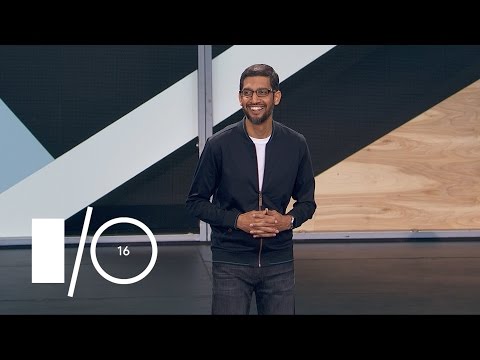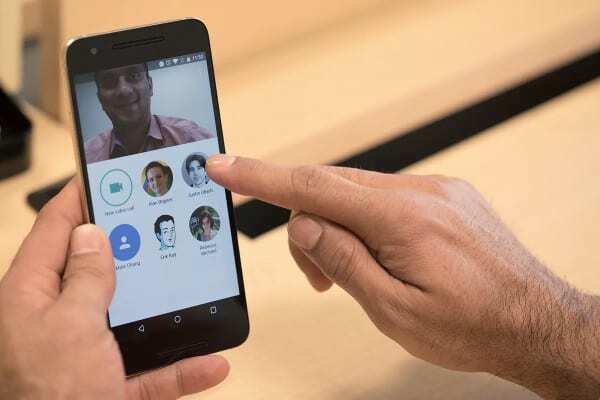Wasn’t there enough complications already?
I use Hangouts all the time. At testRTC, we use it for most of our demos and customer meetings. As good and complete as Hangouts is in terms of the feature set that I need, it can be quite confusing at times. Something that probably stems from its dual use nature: Google Hangouts is both a consumer messaging app and an enterprise unified communications app. And while the two rely on the same technology – they are not the same.
If there is one other similar service that does that it is Skype, and even with it, it is mostly by branding and not by the service itself (I am not sure how uniform the Skype and Skype for Business apps and infrastructure are, but they sure are getting worse in the last year or two).
Can a single app rule them all? By the way things look today – no.
And yet this latest move by Google leaves me somewhat baffled.
At Google I/O’s keynote yesterday, Google came out with a slew of announcements. The ones interesting for me here are those related to messaging or to WebRTC:
- Allo – a new messaging app to fend off Facebook Messenger
- Duo – a new video chat app to fend off Apple FaceTime
- Firebase – a new version which I won’t be covering here
Allo
Allo is Google’s “Smart Messaging App”.

It is yet-another-messaging-app – until you see the suggestions it gives you.
I use Switfkey as my Android keyboard, and it “learns” what you click so future clicking is shorter. The smart messaging replies in Allo are the next step for me – instead of doing it on the word level it does it on the conversation level.
The smarts in Allo seems to be split into two parts – what Allo does on his own, which is suggestions inside the conversation. On top of it, Google added something they call Google Assistant, which goes “out” of the conversation to offer suggestions for external actions. The example in the I/O keynote was restaurant reservation.
This competes directly with messaging and bots. Specifically Facebook. Maybe others.
Where can this lead us?
- If I were Google, I’d make this into a bot or a layer that can be stitched into everything
- Messaging services could use it directly, which will allow Google to sift every interaction and offer their suggestions and automation – no matter the app
- Would messaging apps adopt it? I don’t know, but why shouldn’t they try it out?
Duo
Duo IS WebRTC. Or at least what you can do with it.

A not about Duo, WebRTC and purism – Duo is mobile only (for now), closed app, running on Android and iOS.
I’ll repeat that.
Duo is mobile only (for now), closed app, running on Android and iOS.
No web browser. No complaints about unsupportive Safari or IE browsers. And from Google.
To those who decide to skip WebRTC just because it doesn’t run on IE or not supported by Safari (without really understanding what WebRTC means) – this should be the best wake up call. Coming directly from Google, the company who wants everything running in the browser.

If tech media outlets taught me anything this time, is that you should be suspicious at what they write.
Ingrid Lunden on TechCrunch did a nice write up on Duo, offering the gist of it:
- 1:1 video chat app, like FaceTime
- Focus is on super fast (responsiveness) and media quality
- You see the caller’s video before you answer a call. A nice gimmick I guess
- Based on WebRTC
This is where things flal apart a bit in her coverage:
The other thing that Duo is touting is the engineering that has gone into making the video in the app work. Google says it will work the same whether your network is superfast or patchy. This in itself, if it really bears out, would be amazing for anyone who has cursed his or her way through a bad Hangout or Skype call.
Duo was built by the same team that created WebRTC and it uses WebRTC, engineering director Erik Kay said today on stage at I/O. It was built using a new programming protocol, Quic, which Google unveiled last year as a route to speeding up data-heavy applications that travel over the web.
So Duo has this magic of working better than Hangouts and Skype. Great. So why didn’t Google just build it into Hangouts? Especially considering both use WebRTC…
That reference to the QUIC protocol – to be sure – this does NOTHING to the actual media – only to the time you wait until the smartphone “dials”. You shave a few hundreds of milliseconds there, but that won’t move the needle in the industry either way.
Mashable’s Raymond Wong explains QUIC and how it is a serious advantage:
Google says people don’t place as many video calls with their friends and family because connections can sometimes be spotty and drop. Duo uses a new protocol called QUIC that’s supposed to be more robust than any other video calling infrastructure out there.
QUIC won’t make the call more robust or get calls work better. It will just make them make the initial connection faster or having the mute button appear QUICker on the other end’s device. QUIC is a nice touch of how Google can go to extremes sometimes with optimizing the technology. Sometimes it makes a lot of sense, but other times less so. QUIC is definitely a step forward from TCP, but its effect on video calling isn’t huge.
What do we have here? Apple FaceTime, done by Google, working on both Android and iOS. Nothing more and nothing less.
There’s also Jibe
An acquisition from last year, placing Google as a serious RCS player.
No mention of it in I/O. Probably because its focus is on “fixing”/”improving”/”popularizing” the basic Google Messenger app, which does SMS.
This being something that needs to be synchronized with carriers – it will take time to materialize.
The future of Hangouts
Is the enterprise.
With Allo and Duo, why should consumers even care about Hangouts from now on?
Can this succeed?
Can such an approach succeed for Google? Having multiple communication apps, two of them announced in the same day.
Can they reach mass adoption?
Google is taking the path of unbundling here, but doing it to what was until now the same service – communications. They split it into multiple smaller apps, tearing real time voice and video calling from current messaging apps. It feels somewhat like iMessage and FaceTime, but Allo is more capable than iMessage (sans SMS) and Duo is a bit more capable than FaceTime (the knock knock feature).
I can’t really decide if taking this unbundling approach is better or worse. Will it increase engagement of users with these services or hurt them. And where does Google Hangouts fit in here, if at all?
